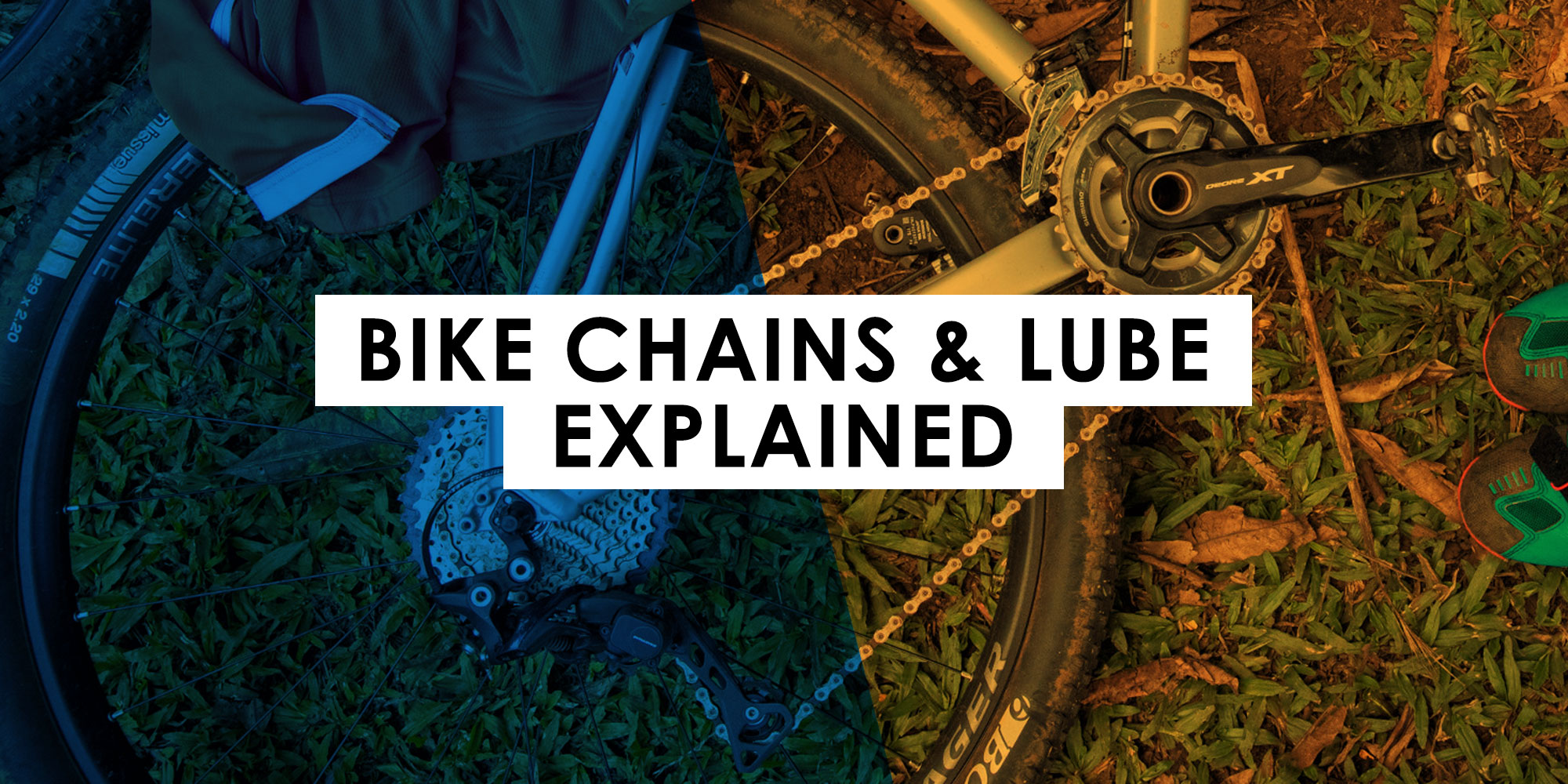The most common question we hear in our bike shop service department is: “How often should I lubricate my chain?” Seems like a simple question, but the answer really depends on your riding habits. Think about your own riding and maintenance habits. Do you clean and lubricate your chain after every ride? Or do you wait until it’s completely dried out and making your ride noisy?
A well-maintained chain makes for a happy bike (and rider). As bike riders, we should all strive to learn some skills to provide our bikes with basic at-home maintenance, such as proper chain cleaning and lubrication. So let’s dive in!
1. Bike Chain Anatomy
A bike chain is comprised of four basic components:
- Outer links
- Inner links
- Rollers
- Pins
Each chain link has two link plates. Rollers are sandwiched between the link plates where the inner and outer links meet. This is all held together with a pin. The rollers are the main part of the chain that interfaces with chainring/cassette teeth. Along with the pins, they allow the chain to articulate as you pedal. When you lube your chain correctly, the lubricant gets into the rollers to allow them to move freely.
2. How to clean and lubricate your chain
At the factory, individual chain pieces are greased before assembly so chains come out of the box lubed and ready to go. However, the factory grease will wear out, so to reduce wear and improve efficiency, you need to clean and lubricate your chain regularly. Your maintenance schedule depend on how much you ride, what conditions you ride in, and your own preference. Some prefer to keep the chain spotless and wash after every ride, while other riders hold off on cleaning until the chain looks super grimy.
Cleaning your bike chain
Before lubricating your bike chain, the chain should be clean and free of abrasives and contaminants that will accelerate chain wear. If your chain has light dust, wiping with a dry rag may be enough. But for a full cleaning, you’ll need water, a degreaser, and brushes.
Bike-specific degreasers can reduce the chance of corrosion and chain-cleaning tools can make the job quick and easy. Stop by Bikes Palm Beach to pick up bike-specific degreaser and scrubbing tools.
Apply the degreaser to the chain, cassette, chainrings and derailleur(s). Scrub out the entire chain, sprockets, and all moving drivetrain parts. All debris should be removed (sand, dirt, grit, grime, chunks of grease, etc.). This is when those scrubbing tools come in handy.
Lubricate your bike chain
Once your sparkling clean chain is dry, apply the lube to the chain rollers by squeezing it from the bottle onto the chain while pedaling backwards. The correct method for applying lube is a personal preference. Some apply lube at the cassette, some at the pulley wheels, and some to the underside of the chain between the chainring and pulley wheels. Some methodically apply a single drop of lube to every roller while others squirt lube with reckless abandon. Many seasoned mechanics have honed their personal methods and will swear it’s the “best” way to lube a chain.
Keep in mind, the only part of the chain that requires lube is the rollers. Excess lube on the links, cassette, pulleys, and chainrings should be wiped away because it will attract dirt, dust, and grime. Wiping the chain with a clean rag before every ride will considerably reduce the amount of chain cleaning you need to do overall.
3. What chain lube should you use?
Most chain lubes can be described as “dry” or “wet.” Dry lubes tend to stay cleaner because they attract less dirt and dust. Wet lubes last longer but can get grimy since they’re designed to handle wet conditions. At Bikes Palm Beach, our local mountain bikers encounter dust, sand, and dirt on the trails, so we recommend a dry lube. For local road riders, we recommend a wet lube as our South Florida rain showers often come like clockwork each day.
4. How to tell if your chain is worn
Your chain will run well as long as it’s clean and lubed, but eventually, it will wear out. As a chain wears it will “stretch,” meaning the distance between pins increases because the pins have worn down. A stretched chain won’t shift well and accelerates wear on your chainring and cassette teeth. Chains usually need to be replaced at .75% stretch. You can check chain stretch with a simple chain wear tool.
Stop by Bikes Palm Beach so we can inspect your chain for wear and make recommendations on how to increase the life and performance of your bike chain.

